MARIANI’S
October 12, 2008
NEWSLETTER
"Turnips, Alsace" (2007) by Galina Stepanoff-Dargery
NEW! Click esquire.com
to go to my new column at Esquire Magazine.
ARCHIVE: Readers may now access
an
Archive of all past newsletters--each annotated--dating back to July,
2003, by simply clicking on www.johnmariani.com/archive
SUBSCRIBE AND
UN-SUBSCRIBE: You may subscribe anyone you wish
to this newsletter--free of charge--by
clicking here.
In
This Issue
ESQUIRE'S BEST NEW RESTAURANTS OF 2008 by John Mariani
NEW YORK CORNER: The Four Seasons by John Mariani
NOTES FROM THE WINE CELLAR: The Mazzei Family Sees the Future of Tuscan Wines by John Mariani
QUICK BYTES
~~~~~~~~~~~~~~~~~~~~~
Salmon
and the Sustainability Zeitgeist
by Jacqueline Church
“Eats first, morals after.”
--Bertolt Brecht, Threepenny Opera
(1928)
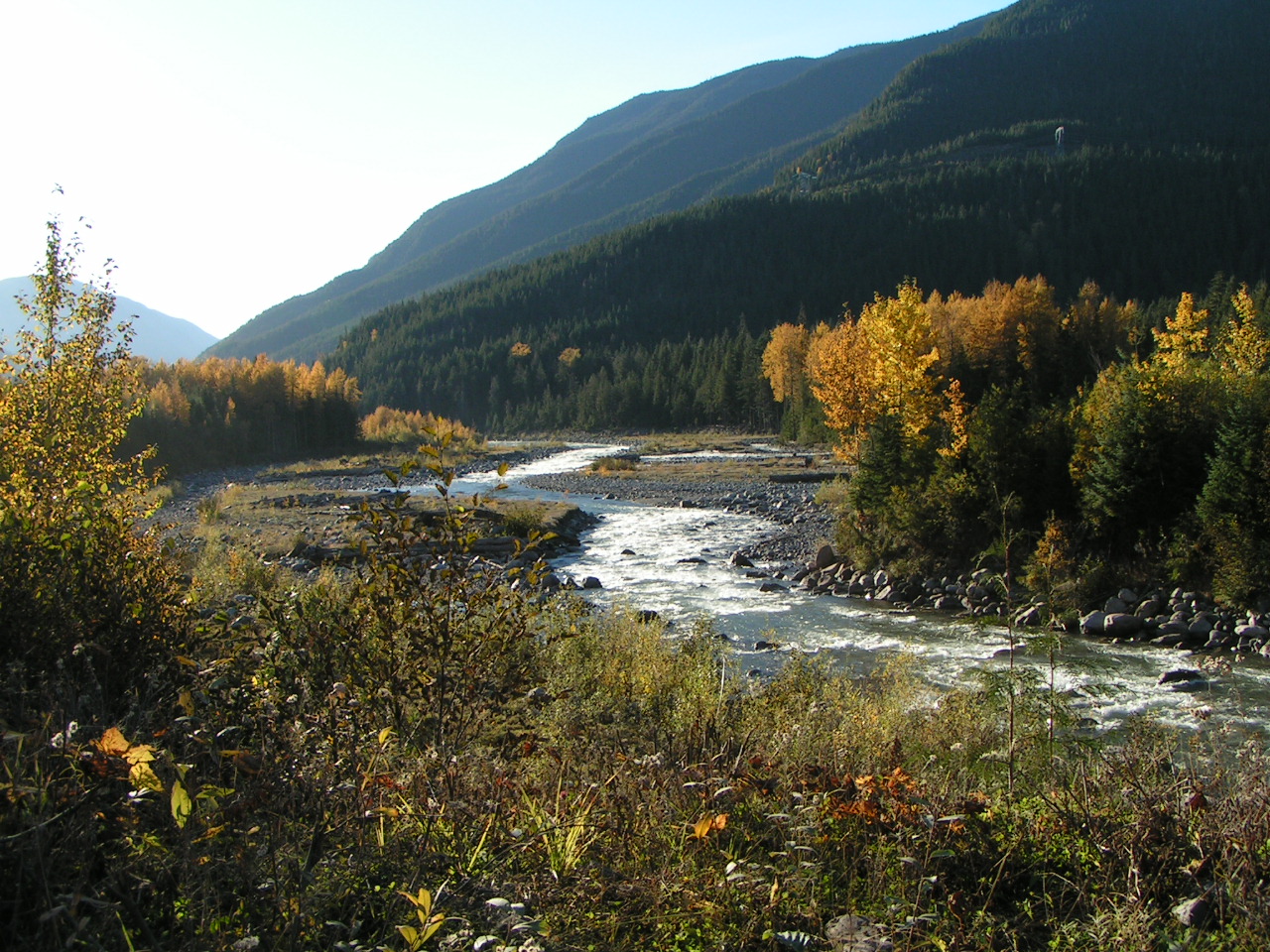
COPPER RIVER, ALASKA
Recall
your last dinner party. Chances are “sustainability” came up in
conversation. Or, it will in the next one you attend.
Foodies, writers, and chefs have refused to let the topic of
sustainable foods fade away. The daily stream of news about
environmental disasters threatens our ability to enjoy a good meal,
guilt-free. If the news doesn’t cast a pall on dinner, a vigilant
fellow diner may. So common are the pronouncements and moral tirades
these days, it seems that people have forgotten how to be good company,
how to break bread with joy.
Other than the foie gras fiasco, perhaps no other
element of our contemporary diet has been as debated as seafood. Salmon
enjoys a precarious perch as one of the “big three” favorites among
consumers. Tuna and shrimp round out the trifecta of debatable dinners.
We are urged to forgo salmon completely by some
well-intentioned (and deluded) experts. Another voice at the dyspeptic
dinner table says to eat fish, just not too many and not if you’re
nursing, pregnant, or otherwise compromised. Still others will allow us
some of the forbidden fish, so long as we promise not to buy farmed
salmon. I’m surprised how many people can recite the number of pounds
of fish food it takes to farm one pound of salmon (At least three, some
say
many
more, making farmed salmon inherently unsustainable.) At the fringe
are a few who are working to improve farming methods. Then there are
those who would have the government issue bans. Good luck!
We have an insatiable appetite for fish like salmon
for many perfectly sound reasons. Taste, ease of preparation,
compatibility with wine, harmony with other foods, healthy omega-3
fatty acids; salmon has it all. It’s not hard to see why salmon is not
going away. Or is it?
The Trouble with Salmon
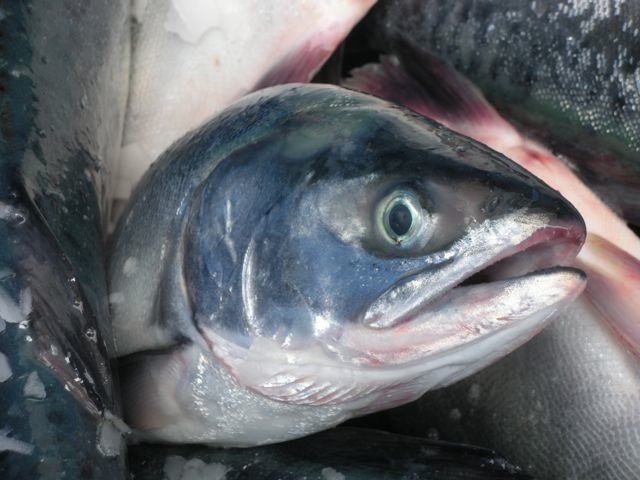 Trouble
in river city. Any spawning river,
that is. The trouble is the fish are disappearing. Actually, that’s the
easy headline. The truth, as usual, is a bit more nuanced. (Cue the
angry emails. It’s okay, I learned through the foie fights to ignore
them.) There have been alarming drops in several runs in Oregon and
Washington. There have also been good runs in other areas. And, there
are communities that depend on our love of salmon to survive.
Trouble
in river city. Any spawning river,
that is. The trouble is the fish are disappearing. Actually, that’s the
easy headline. The truth, as usual, is a bit more nuanced. (Cue the
angry emails. It’s okay, I learned through the foie fights to ignore
them.) There have been alarming drops in several runs in Oregon and
Washington. There have also been good runs in other areas. And, there
are communities that depend on our love of salmon to survive.
This month, I was invited to join a
media tour of chefs
and writers on a visit to Cordova, Alaska. Cordova is a picturesque
fishing town off the Prince William Sound on the Copper River Delta.
Cordova was incorporated 100 years ago in 1908. The state of Alaska is
much younger (statehood in 1959). Cordova sits on Orca Inlet and it’s a
hardworking, fun-loving town.
Tops
and Bottoms
Taras Grescoe’s book Bottomfeeder (Bloomsbury) is causing a
stir in the food world, and sustainable food advocates are mostly
measured in response. The subtitle, How
to Eat Ethically in a World
of Vanishing Seafood, indicates
part of the problem people have with the book. Ethics and food are too
complex for simple solutions. Forgoing salmon, tuna and shrimp (even
assuming this were possible) doesn’t change the whole food production
and delivery system. It doesn’t offer a global solution or even a local
one. It doesn’t enforce sustainable fishing practices. Top of the food
chain fish like salmon are the ones that Grescoe would have us forgo
completely.
I therefore leapt at the chance to meet real
fishermen and
women, tour a cannery, view the Copper River Delta from a plane, walk
the docks, and
spend time with locals in an important fishing town that sits at the
nexus of the debate. The offer was all the more enticing, coming on the
heels of the Monterey Bay Aquarium’s Cooking for Solutions event and
the recent publication of Grescoe’s Op-Ed piece in the New York Times.
Turns out, he got it about half right. He wants
everyone to stop
eating salmon because the population has been decimated in most places.
As far as it goes, that's fine. But, Alaska shouldn't be penalized by
scaring away customers from its products. They take great care to
manage their fishstocks and resources, sometimes over-manage, but
everyone bears the burden because they understand their long-term
livelihood and the salmon that's so precious to them depend on it. So,
it's like punishing all
your kids because one of them skipped school to go to the Red Sox
rally.
Unfortunately,
Grescoe does a great
disservice to the one state that manages
its resources in truly model ways. Alaska has incorporated in its very
Constitution the responsibility of its government and citizens to
balance the competing needs of economic development and sustainability.
In Cordova I sat at dinner tables, lunch
counters, and bars
with people who are bearing the pain of a shorter or diminished run.
Fluctuations in fishing harvests dictate much in a town like Cordova.
No fish means no money. Investing in new equipment after a good season
may seem wise. But a lean run and high fuel costs next season, make it
prohibitive to go out. There sits your investment; your money locked
into a boat that’s not able to bring money in.
Yet people in Cordova have fished for generations. They’ve
enjoyed strong years and endured lean ones. They accept that
responsible management of fish is not only their duty as citizens, but
also provides for their future, their livelihood. They are rightly
proud of their gem of a town and their beautiful, delicious, and
healthy Copper River Salmon.
➔ Here are five things
you might not have known about wild Alaskan salmon
•Ninety percent of the US
wild salmon catch comes from Alaska and is not affected by the West
Coast fisheries closures.
•In 2007, the commercial harvest in Alaska exceeded 212 million fish --
the fourth largest Alaska salmon harvest on record.
•No species of Alaska seafood has ever been listed as threatened or
endangered under the Endangered Species Act.
•The top 10 Alaska salmon harvests on record (since 1900) have all
occurred in the last 16 years.
•The Seafood Watch Program and the Marine Stewardship Council both give
a green light to wild Alaskan salmon.
•Alaska does not allow any fish farming. Therefore, Copper River Salmon
(indeed, all Alaskan seafood) is wild, by definition. Chefs including
John Besh, Barton Seaver, John Ash, Melissa Kelly, Susan Feninger, Rick
Bayless and many others who are sustainability leaders, have signed on
to the Congress of Conscious Chefs and proudly serve wild Alaskan
Salmon.
~~~~~~~~~~~~~~~~~~~~~~~~~~
Jacqueline Church writes
about food for Suite101.com. Her “Teach a Man to Fish” blog event
was recognized by the Seafood Watch Program for promoting sustainable
seafood choices.
~~~~~~~~~~~~~~~~~~~~~~~
Esquire ANNOUNCES THE 
20 BEST NEW RESTAURANTS OF 2008
In
the November issue of Esquire
I have written my annual round-up of the "20 Best New Restaurants of
2008" in America. As I note in the introduction, For
one-third of
the Esquire’s 75 years, I have been ferreting out and heralding
America’s best restaurants--the chronicle of an era that saw France’s la nouvelle cuisine
translated into the New American Cuisine, then
fusion, global, and molecular cuisine. I’ve chowed down $55
hamburgers, olive oil ice cream, chocolate-flavored beer, oceans of
foamed sauces, and lobster tartare. I’ve seen the rise of tea
sommeliers and fromageurs,
the decline of Prime beef, the demise of
smoking in restaurants, and the near-total disappearance of tablecloths.
And through it all, we’ve seen the emergence
of American gastronomy as the most diverse, most regional, and most
innovative in the world. You eat in Italy, you still eat Italian. You
go to Mexico, everything’s wrapped in a tortilla. You go to China,
bring your chopsticks. In the U.S. chefs from all those countries, and
everywhere else, have not only had savory impact here but two
generations of well-educated, well-traveled American-born chefs have
used their ingenuity to create a modern American cuisine no other
country can begin to match, from a New York strip to a Chinook salmon,
from Cajun gumbo to Chicago pizza, from Oregon pinot noirs to Long
Island cabernets.
And through it all, I'm still starving for another
good
meal. Here, in 2008, is where you’ll find 20 of the best meals of your
life.
RESTAURANT OF THE YEAR--L20, Chicago
CHEF OF THE YEAR--Dominique Crenn, Luce, San Francisco
Scarpetta, NYC;
Convivio, NYC; Bar Boulud, NYC; Bar Blanc, NYC; Kampuchea, NYC; Scampo, Boston; Voice, Houston; Restaurant at Mansion on Turtle Creek,
Dallas; Takashi, Chicago; Mercat, Chicago; Plumed Horse, Saratoga, CA; Palate Food + Wine, Glendale,
CA; Corbett’s, An American Place--Louisville;
Pacific Time, Miami; Zahav, Philadelphia; Distrito, Philadelphia; Terra, Tesuque, NM; Spruce, San Francisco.
. . . And for those wondering why David Chang's much-hyped
Momofuko Ko did not make Esquire's list:
WHY
WE NO GO TO KO: Because, after months of
trying, we
couldn’t get a rez for one of the 12 stools at the bar at David Chang’s
feverishly-hyped new restaurant Ko on New York’s Lower East Side.
There’s no phone number, no secret line for the media: just a website
whose byzantine workings force you to register, then wait each morning
at exactly 10 AM to punch in your request for a seat. One second too
late and the seats are gone. They always are. Our Esquire staffer
dutifully tried
this for
two months, including weekends, without
ever scoring a seat. So, even though Gourmet
Magazine
calls Chang the
most important American chef of the last half-century and Anthony
Bourdain exalts Chang as a “demi-god,” your chances are no better than
theirs or ours ever to eat at Ko. Mind you, Chang himself
has said, “I don’t believe in that whole superstar celebrity chef
thing. I’ve worked in too many kitchens where the egos got in the way
of the food. . . . . Sometimes I feel like I’m on ‘The Truman Show.’ I
always considered myself one of the worst cooks in any kitchen I ever
worked at.” But, hey, if you do get through, give me a
call. I’d love to join you.
AND HERE ARE A FEW NOTES ABOUT EATING MY
WAY THROUGH AMERICA IN 2008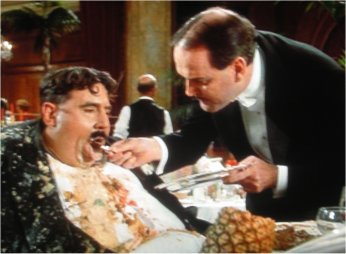
NUMBER
OF RESTAURANTS VISITED: 115
NUMBER OF
STATES: 15
NUMBER
OF
MILES FLOWN: 35,000
NUMBER OF
REALLY ROTTEN MEALS: 10
NUMBER OF
NEW RESTAURANTS THAT STILL HAVE TABLECLOTHS: 12
NUMBER
OF NEW RESTAURANTS WITH EAR-SHATTERING DECIBEL LEVELS: 55
NUMBER OF RESTAURANTS WHERE I NEEDED A FLASHLIGHT TO READ THE MENU: 15
NUMBER OF RESTAURANTS THAT CLOSED BEFORE I COULD EVEN WRITE ABOUT THEM:
6
NUMBER OF SOFT-CENTER CHOCOLATE CAKES ON MENUS: 102
NUMBER OF RESTAURANTS OPENED BY ALAIN DUCASSE: 3
AVERAGE PRICE OF A DINNER PER PERSON WITH WINE, TAX AND TIP: $115
NUMBER OF HOTTIE HOSTESSES I WANT MY SONS TO MEET: 12
NUMBER OF RESTAURANTS SERVING
BEET-AND-GOAT'S CHEESE SALAD: 97
NUMBER
OF NECKTIES RUINED: 3
NEW
YORK CORNER
by John Mariani
THE FOUR
SEASONS
99 East 52nd Street (near Park Avenue)
212-754-9494

A
decade ago I co-authored the book The Four Seasons: A History of America's
Premier Restaurant (you
may order it from by clicking on its cover at the end of this
newsletter), with Alex von Bidder, who, with Julian Niccolini,
have owned the famous restaurant since 1995. The book was as much a
social history of New York's very mutable dining scene from the 1950s
to the 21st century as it was of the restaurant, through long stretches
when The Four Seasons,
which had opened in 1959, was losing money as recessions and disasters
took their toll on the city. That it has survived in all its
original glory--set within the Seagram Building designed by Mies van
der
Rohe and designed by Philip Johnson and Bill Pahlmann--is an
astonishment, and the fact that it is still considered one of the
quintessential restaurants of New York is testament to all those who
kept it going from the early years when Restaurant Associates ran it,
then later Paul Kovi and Tom Margittai, then von Bidder and Niccolini.
So, since I have an obvious bias towards The
Four Seasons, you may take any report by me on the current state of the
restaurant with as many grains of salt as you like. Nevertheless,
I suspect that most food writers' opinions would closely mirror mine,
and the restaurant's popularity, both for its "power lunch" (a term
created by Esquire Magazine
specifically to describe the New York business titans who pack the
Grill Room each day) and for the romantic beauty of the Pool Room.
My brother and his wife were in town from
Rhode Island, and The Four Seasons was always his favorite restaurant,
as symbolic of Manhattan glamor and sophistication as any totem on the
island. My wife and I, who had not dined at the restaurant in
years, happily joined them in the Pool Room, yet again exhilarated by
the breadth and height of the room, the babbling of the marble pool,
the tall seasonal trees reaching to the ceiling, and the barely moving
strings of metal beaded curtains on the vast windows that overlook the
plaza of the Seagram Building. Indeed, the genius of Johnson and
Pahlmann's design is its agelessness; it looks as modern as any
restaurant in the United States while evoking the International Style
that dates to the 1960s, when polish and finish meant more than razzle
and razzle.
The menu format is pretty much the same--a
large broadsheet with 20 appetizers,10 main courses, and specialties
for two people, appended by nightly offerings. The winelist has
been considerably changed from being printed on the back of the menu to
being paged in a book of historic photos of the restaurant's five
decades in business, including the fabulous wine barrel tasting dinners
that were in
the vanguard of promoting California wines. Prices have risen, of
course, but, with appetizers $22-$42 and main courses
$38-$58, not actually the
highest in New York, A three-course meal here will average close
to a hundred
bucks per person (without wine, tax, and tip), which puts it in a
league just below the fixed price menus of many haute cuisine French
restaurants in Manhattan. Still, it ain't cheap, but look at what
you're getting all around you.
We
began with Hudson Valley foie gras with sweet roasted figs and rose
petal jam. Here, as in everything from chef Christian Albin's kitchen,
the ingredients are the focus and everything else enhances them.
A tomato consommé (always a risky choice because it can so
easily be
bland) was
here a deeply flavorful reduction, with orzo and a little basil. A
tasting of hamachi, bonito and bass sushi was pristine, and tiger
prawns with crabmeat and a simple lemon-chive sauce was meaty and
sweet.
Dover sole, once ubiquitous on French
and continental menus, finds no better harbor than at The Four Seasons,
the fat fish simply floured and sautéed in abundant
butter,
easily separated from its bones and wonderful with crisp rösti
potatoes and
creamed spinach on the side. I opted for maple-mustard-glazed
suckling
pig with braised celery hearts and mashed potatoes, a delightful dish
for early autumn. My brother and my wife shared one of the
classic great dishes here, on the menu for ages and brought to
perfection long ago--crisp-skinned duck with a cherry compote--the meat
so tender and silky, the whole package so toothsome, quite deserving
of its renown.
We followed with a selection of cheeses,
which, sadly, came out cold, suggesting they don't serve much cheese
here. Then came the wonderful blossoming Grand Marnier souffles and
petit-fours,
with a glass of dessert wine. Someone at another table was
celebrating a birthday, so, as always, the kitchren sent out cotton
candy--another Four Seasons signature that connotes the place does not
take itself quite so seriously.
It was a special night, a commemorative
one, a familial reminder of ties that bind us. But it was also a
dinner of distinction, if not breathtaking in its novelty, certainly
prepared and served with the kind of consistency a long-time
professional team invests in such a storied place. With a better track
record than any of the New York sports teams, The Four Seasons is among
the great champions of American gastronomy.
The Four Seasons is
open for lunch Mon.-Fri., for dinner Mon.-Sat.
NOTES
FROM THE WINE CELLAR
After Six Hundred Years Tuscany’s Mazzei Wine Family Branches Out in the 21st Century
by
John Mariani

The
family that gave Chianti its name back in the 14th century has
entered the 21st with an array of wines they are proud to call, simply,
Tuscan. In doing so the Mazzei family, which by marriage gained the
Castello Fonterutoli estate (above)
in 1435, is part of a movement to expand
the scope and style of Tuscan wines by declining to obey the strictures
of the Denominazione di Controllata
Garantita (DOCG) rules that state
Chianti can only contain certain grapes and come from distinct,
improved zones.
Thus, while Mazzei still makes wonderful
Chianti Classicos under the Castello Fonterutoli label, its more modern
wines carry the lowest denomination of Indicazione Geografica Tipico
(IGT), which merely suggests the wine in the bottle is typical
of the
region. These wines, from Chianti zones, go by names like Badiola
and Siepi, while newer wines from the Maremma region, also in Tuscany,
carry names like Serrata, Tenuta Belguardo, and Bronzone. They
are also now making a robust red wine called Zisola in Sicily from the
nero d’avola grapes grown there.
“Our family dates back to the 11th
century, so we are extremely devoted to Tuscan traditions,” says
Francesco Mazzei, 48, who with his brother Filippo and father Lapo (below),
oversees all the wine production with the hindsight of 24 generations.
“The first recorded mention of the word `Chianti’ was by our ancestor
Ser Lapo Mazzei, and another, Filippo, was asked to plant vineyards at
Monticello by Thomas
Jefferson.”
Mazzei
Family Tree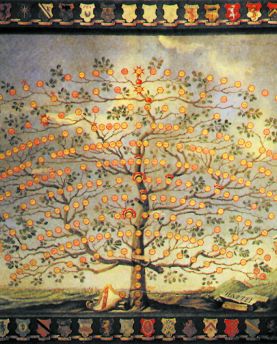
Such experience and legacy has long made
the Fonterutoli label one of the most prestigious among Chianti
producers. Over lunch at a New York trattoria, I was again impressed
with how solid and how essentially typical their basic Chianti Classico
($27) is, with the identifiable cherry flavors and smokiness of the
aged sangiovese grape.
Their Castello di Fonterutoli 2005 is
certainly worth the $60 price tag for its persuasive blend of
sangiovese with the tannic backbone of cabernet sauvignon. And
the Siepi ($107), which is an IGT wine, blends merlot in with the
sangiovese to produce a big, warm wine with layers of flavor and very
smooth tannins and toasty notes from being finished in small new French
oak barrels. Its slightly higher alcohol content of 14.2 percent seems
just about perfect for the body provided here. Here is one of those
“Super Tuscans” that transcends the Chianti ideal with power and
complexity.
“The old generation of Italians drank a lot
more wine than we do today,” says Mazzei, “per capita 120 liters in
1960 compared with 50 liters today. But most of their wine was in bottiglione (jug wine
size bottles), and now Italians are looking for
more quality and are willing to pay for it.”
The IGT appellation, then, was, in fact,
intended to satisfy producers like Fonterutoli, Antinori, Castello
Banfi, Castello di Brolio, and others who make Super Tuscan wines
without their having to carry the label “vino da tavola” (table
wine). Mazzei’s Belguardo estate in Maremma, nearer the sea, and
its IGT wines picture a geometrical symbol by Leonardo da Vinci
representing precision and perspective. Serrata is a blend of
sangiovese and alicante grapes; and Tenuta Belguardo even more unusual,
with 90 percent cabernet sauvignon and 10 percent cabernet franc.
Bronzone 2004 ($30) does have a Maremma DOC and is 100 percent
sangiovese whose age has given it a charming sweet-dry balance and a
good squeak of acid to keep it refreshing.
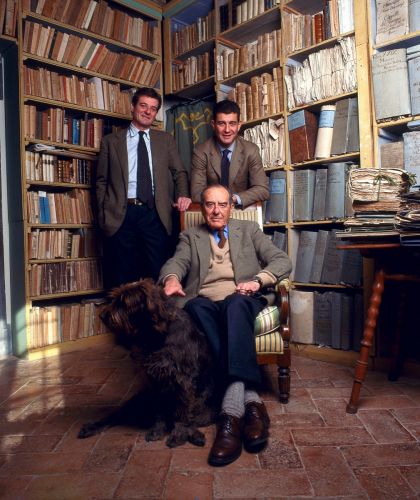 The Sicilian experiment with nero
d’avola began in 2002 with the purchase of a 50 hectare (124
acres)estate called Zisola, with 17 hectares (42 acres) of
vineyards. The heat of Sicily would be rough on sangiovese and
cabernet sauvignon, whereas the traditional nero d’avola has already
proven itself on the international market as a 21st century
winner. The Mazzei’s Zisola label ($25) should do well, for the 2006 is
already full of spice and pepper, with some of those southern
Mediterranean floral notes that evoke the terroir of the vineyards in
the southeast.
The Sicilian experiment with nero
d’avola began in 2002 with the purchase of a 50 hectare (124
acres)estate called Zisola, with 17 hectares (42 acres) of
vineyards. The heat of Sicily would be rough on sangiovese and
cabernet sauvignon, whereas the traditional nero d’avola has already
proven itself on the international market as a 21st century
winner. The Mazzei’s Zisola label ($25) should do well, for the 2006 is
already full of spice and pepper, with some of those southern
Mediterranean floral notes that evoke the terroir of the vineyards in
the southeast.
As
someone who has criticized Italian producers for upping their prices
before they had the quality and consistency, I admire the Mazzeis for
being sensible about building a 21st century reputation built on 24
generations of experience. “We know the dollar is weak against the
euro,” says Mazzei, “but we are very serious about the U.S. market and
we’re trying hard to hold the line on pricing.
~~~~~~~~~~~~~~~~~~~~~~~~~~~~~~~~~~~~~~~~~
John
Mariani's weekly wine column appears in Bloomberg Muse News,
from which this story was adapted. Bloomberg News covers Culture from
art, books, and theater to wine, travel, and food on a daily basis, and
some of its articles play on the Saturday Bloomberg Radio and TV.
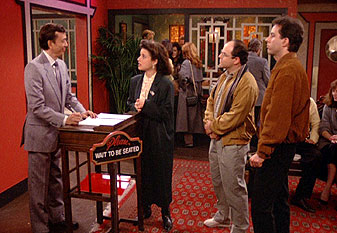
JUST IMAGINE IF LEONA HELMSLEY ATE THERE!
In London, Golda Bechal, who died at 89, willed $20 million to her favorite Chinese restaurant’s owners, Kim Sing Man and his wife Bee Lian, without leaving a penny to her relatives—who, of course, sued the estate contending she was demented and won back $2 million, but then had to pay court costs of $800,000.
WELL, LA-DEE-DAH, LA-DEE DAH . . . DAH
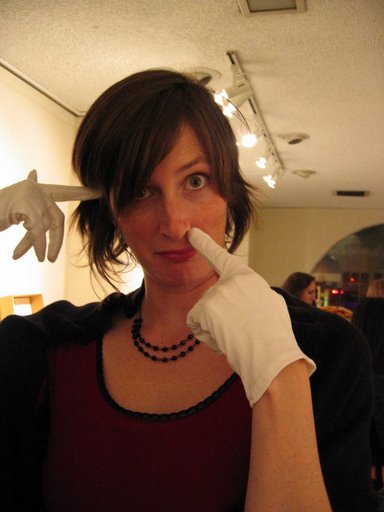
“This love letter to the legendary bars of some of Paris’s most luxurious (and expensive) hotels is not to suggest that I prefer to lap my gin from Baccarat crystal. And as compelling as I find the cultural lore of early-20th-century Paris, I don’t go to the bar at the Hôtel de Crillon to try to coax Teddy Roosevelt out of the woodwork. If I were only after luxury and history, I’d go read a book in the Louis Vuitton store. The secret is that this cluster of Right Bank monuments holds, and often hides, lounges that provide singular, decadent, theatrical sets for a magical night out in Paris, where opulence and silly fun can go hand in white-gloved hand.”—Julia Langbein, “We'll Always Have Cocktails,” Gourmet (October, 2008).
QUICK BYTES
TO ALL PUBLICISTS: Owing to the amount of
material sent to this newsletter regarding Thanksgiving, Christmas, and
New Year's dinners--many of which are only announcements as to price
fixed dinners--it is impossible for me to include any but the most
unusual of events for those holidays in Quick Bytes.
--John Mariani
* In celebration of Breast Cancer Awareness month, NYC’s Magnolia Bakery is proud to support
the Susan G. Komen Foundation with their “Power of the Cupcake” fund.
Specially made during the month of October, Magnolia offers Pink Ribbon
cupcakes decorated with a custom-designed Pink Ribbon de-con, with 50
cents of each sale going to the Foundation.
* For those who want to savor what China Grill has been
all about for
the past 21 years (in NY and 13 years in Miami Beach), China Grill
South Beach introduces a ‘classics tasting menu’ offered for
6-course
dinner at $69 pp. Call 305- 534-2211.
* From now until Election Day Chef Steve Chiappetti
from Chicago’s Viand will be
doing his Democrat vs. Republican menu. Guests can partake in either
prix fixe menu, at $20.08. In addition, guests will receive a ballot to
select their preferred candidate. Should that candidate win, the ballot
can be brought back to Viand, where guests will receive 50% off their
next meal at the restaurant. Call 312-255-8505; www.viandchicago.com.
* Through Oct. 17, Giovanni,
in conjunction with the NYC Wine & Food Festival, pairs 5
courses with 5 wines, offered exclusively to Amex cardholders at
$80 pp. Call 212-262-2828; www.giovanni-restaurant.com.
* In NYC, Brasserie
Cognac de Monsieur Ballon, will host a special Cognac School on
Saturdays beginning Oct. 18 and ending November 8. $60 pp.,
$100 for two. Call 212-757-3600.
* On Oct. 18 along the Beaches of South Walton, FL, Brew-Ha-Ha on the Boulevard, in
Grand Park will showcase 125+imported and micro-brewed beers from 25+
countries, along with a walk-about food tasting from Grand Boulevard’s
destination restaurants – Cantina Laredo Gourmet Mexican Food,
Fleming’s Prime Steakhouse & Wine Bar, Kilwin’s Chocolates, Fudge
& Ice Cream, Mitchell’s Fish Market, P.F. Chang’s China Bistro and
Tommy Bahama’s Tropical Café. $25 in advance and $30 day
of the event at all Wine World locations. Call 850-654-5929;
www.grandboulevard.com.
* On Oct. 23 in Dallas, Aurora
will hold a 5-course ZD Wine Dinner at $150 pp. Call 214-528-9400.
• On Oct. 23 in Old Mt Pleasant,
SC, The Old Village Post House
holds its next 4-course wine dinner by Frank Lee, Executive Chef and
Jim Walker, Chef de Cuisine, featuring Bravante Vineyards, with wine
pairings by Patrick Emerson, Wine and Beverage Director. Call
843-388-8935; www.oldvillageposthouse.com.
• On Oct. 26 NYC’s Tabla will kick off its 10 Year
Anniversary with a special Diwali feast by Chef Floyd Cardoz, served
family style. As is customary with the holiday, Tabla will hand out
boxes of Indian sweets as parting gifts. $89 pp.
children 12 years and under $50. Call 212-889-0667.
* On Oct. 26 in Lockport, IL, at Tallgrass, Chef Robert Burcenski and
Maitre‘d Thomas Alves will host a special 4-course Fall Harvest Dinner
at $45 pp, with a 3-glass wine flight for an additional $30. Call
815-838-5566.
* On Oct. 28 in NYC Capsouto
Freres celebrates its
28th anniversary with a 3-Course Prix Fixe Menu for $28 pp.
Each guest will also receive a complimentary glass of Yarden Brut
Sparkling Wine. Call 212-966-4900; www.capsoutofreres.com.
* On Oct. 28 in NYC, Eleven Madison Park and Champagne
Jacques Selosse
will present an evening featuring a 6-course dinner from Chef Daniel
Humm, paired with wines of Champagne Jacques Selosse. $495 pp/
Call
Dana Longiaru at 646-747-2586.
* On Oct. 31 and Nov. 1 Charlie Palmer’s Aureole
in NYC celebrates its 20th Anniversary with a Special “20 Bites”
8-course tasting menu and wine pairing covering the favorite dishes
from the past two decades. $300 pp. Call 212-319-1660.
* On Nov. 2 Sassi
restaurant in Scottsdale, AZ, hosts a traditional Italian
festival called Festa di Maiale, or Festival of the Pig., with Italian
wine tasting, live musical entertainment, and indoor and outdoor
seating. $65 in advance and $75 the day of. Call (480) 502-9095. Visit
www.Sassi.biz.
* On Nov. 3 in Los Angeles, Chef Neal Fraser and Grace Restaurant will host a
fundraising dinner for Careers through Culinary Arts Program .
$125 pp. Call 818-990-5542.
* On Nov. 6 The Dining Room at The Ritz-Carlton, San Francisco announces An Evening with Michael Silacci, winemaker for Opus One Vineyards and 6-course dinner created by Ron Siegel. $395 pp. Call 415-773-6168.
Everett Potter's Travel Report:

~~~~~~~~~~~~~~~~~~~~~~~~~~~~~~~~~~~~~~~~~~~~~~~~~~~~~~~~~~~~~~~~~~~~~~~~~~
Eating Las Vegas is the new on-line site for Virtual Gourmet contrinbutor John A. Curtas., who since 1995 has been commenting on the Las Vegas food scene and reviewing restaurants for Nevada Public Radio. He is also the restaurant critic for KLAS TV, Channel 8 in Las Vegas, and his past reviews can be accessed at KNPR.org. Click on the logo below to go directly to his site.
~~~~~~~~~~~~~~~~~~~~~~~~~~~~~~~~~~~~~~~~~~~~~~~~~~~~~~~~~~~~~~~~~~~~~~~~~~~
Tennis Resorts Online: A Critical Guide to the World's Best Tennis Resorts and Tennis Camps, published by ROGER COX, who has spent more than two decades writing about tennis travel, including a 17-year stretch for Tennis magazine. He has also written for Arthur Frommer's Budget Travel, New York Magazine, Travel & Leisure, Esquire, Money, USTA Magazine, Men's Journal, and The Robb Report. He has authored two books-The World's Best Tennis Vacations (Stephen Greene Press/Viking Penguin, 1990) and The Best Places to Stay in the Rockies (Houghton Mifflin, 1992 & 1994), and the Melbourne (Australia) chapter to the Wall Street Journal Business Guide to Cities of the Pacific Rim (Fodor's Travel Guides, 1991). THIS WEEK: On the Road: Tampa-Sarasota

Family Travel
Forum: The Family Travel Forum (FTF), whose motto is "Have
Kids, Still Travel!", is dedicated to the ideals, promotion and support
of travel with children. Founded by business professionals John Manton
and Kyle McCarthy with first class travel industry credentials and
global family travel experience, the independent, family-supported FTF
will provide its members with honest, unbiased information, informed
advice and practical tips; all designed to make traveling a rewarding,
healthy, safe, better value and hassle-free experience for adults and
children who journey together. Membership in FTF will lead you to new
worlds of adventure, fun and learning. Join the movement. This week: Keys
to the Florida Keys.
All You Need to Know Before You Go
~~~~~~~~~~~~~~~~~~~~~~~~~~~~~~~~~~~~~~~~~~~~~~~~~~~~~~~~~~~~~~~~~~~~~~~~~
MARIANI'S VIRTUAL GOURMET NEWSLETTER is published weekly. Editor/Publisher: John Mariani.
Contributing Writers: Robert Mariani,
John A. Curtas, Edward Brivio, Mort
Hochstein, Suzanne Wright, and Brian Freedman. Contributing
Photographers: Galina Stepanoff-Dargery, Bobby Pirillo. Technical
Advisor: Gerry McLoughlin.
Any of John Mariani's books below
may be ordered from amazon.com by clicking on the cover image.
 My
newest book, written with my brother Robert Mariani, is a memoir of our
years growing up in the My
newest book, written with my brother Robert Mariani, is a memoir of our
years growing up in the For those of you who don't think of the Robert and I think you'll enjoy this very personal look at our --John Mariani |
 |
 |
 |
 |
 |
 |
© copyright John Mariani 2008
